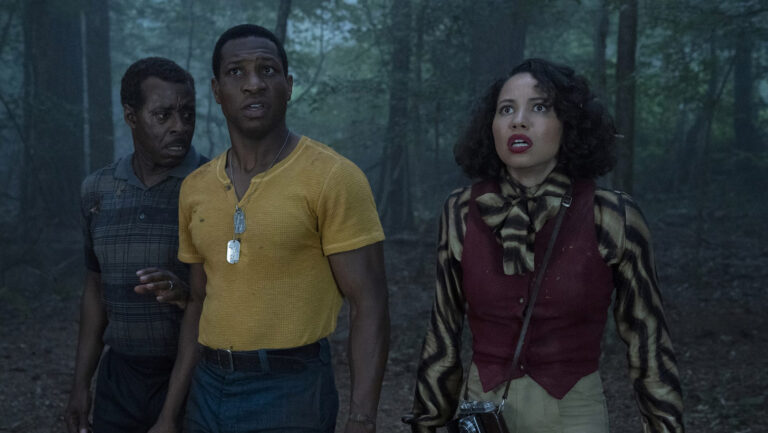The inspiration for Rodriguez' newest kiddy flick comes courtesy of his 7-year-old son Racer. While it may seem impressive that a 7-year-old could come up with the plot for a feature film, it must be noted that The Adventures of Shark Boy and Lava Girl in 3-D does feel like it was written by a 7-year-old.
The plot–using the word generously–follows the Wizard of Oz-like adventures of young Max (Cayden Boyd), who is picked on in school for his daydreaming ways. Max has created an entire fantasy world about two young superheroes named Shark Boy and Lava Girl, who spend their time engaging in various adventures on Planet Drool. (Honestly, he's not that clever a kid.) Every adult tries telling Max that overactive imaginations are a waste of time. Naturally, all the adults are wrong. Max's dream world is so vivid, in fact, that Shark Boy (Taylor Lautner) and Lava Girl (Taylor Dooley) show up at Max's school one day begging him to come save Planet Drool. … Seriously. Is this a movie or a Burger King kids' meal?
As luck would have it, Max's dream world is being slowly taken over by The Darkness. (Yeah, I saw The Neverending Story too.) While navigating a string of CGI action sequences suitable for inclusion in one of several Disney theme park rides, Max must overcome his self-doubt and transform himself into the somnambulant version of Neo, capable of bending the Matrix–sorry, Planet Drool—to his will.
Along the way, Max and his heroic companions must face off against the evil Mr. Electric, a computerized doppelgänger of Max's stuffy grade school teacher (played by George Lopez). There's also some intimation that Mr. Electric is working for some greater, shadowy evil, but that plot thread is pretty much discarded by film's end.
Rodriguez, a man who's made his living as an “imaginative” artist, seems intent on validating his career choice and proving he's still an adolescent at heart. But the film feels like an adult's out-of-touch interpretation of what kids like. The Land of Milk and Cookies? C'mon, Robert, what cell-phone-toting, Xbox-playing, “Jackass”-watching adolescent is going to think that's cool?
TAoSB&LGi3-D is, more or less, a random sequence of video game segments laced with an absolutely wearying parade of puns and interspersed with some of the most preachy dialogue ever ladled on kids. Rodriguez certainly gets points for staying on message. “Imagination is good,” he cries loudly and often. It's as if Mr. Rogers, Dr. Phil and Diantetics founder L. Ron Hubbard all got together and wrote a treatise on following your dreams. The word “dream” is uttered so often, in fact, that that you'll soon wish people would just stop saying the word “dream.” Parents trapped in this garish kiddy funhouse are advised to make a game of it: See how long the movie goes before ejaculating the word. I think the maximum I counted was 45 seconds.
The 3-D sequences, last utilized in Rodriguez' Spy Kids 3-D: Game Over, are intriguing enough for kids, but don't show much innovation beyond the days of Bwana Devil. Everyone points at the audience a lot and spits things with alarming regularity, but there isn't much else here to justify the gimmick.
I don't deny that Rodriguez is an imaginative guy, but sometimes (here, and in the last couple Spy Kids films) his imagination simply runs away with him. TAoSB&LGi3-D (seriously, how's that even gonna fit on the marquee?) is weird, distracted and far more interested in petty details (Look! Dogs made out of electrical cords!) than with the big picture.
Bottom line: If you've got more than one digit in your age, it's too many. Very young children may have fun juggling their magic 3-D glasses and waiting for the next fart joke. Adults will probably just wind up with eyestrain headaches and confused looks on their faces.



